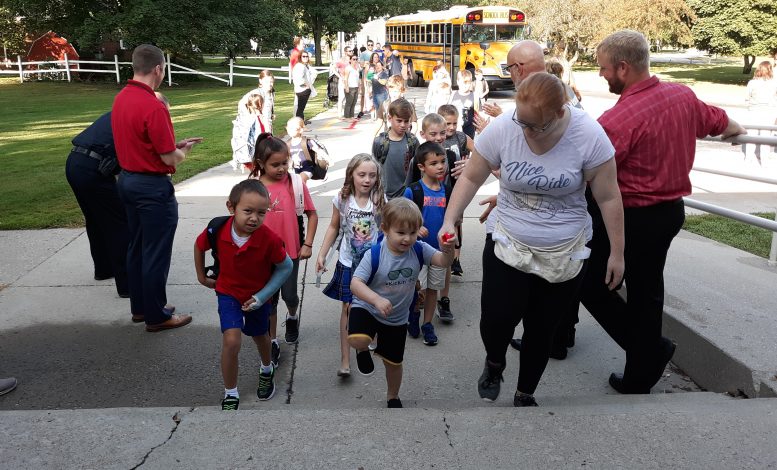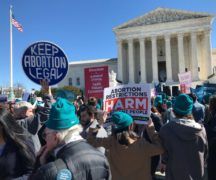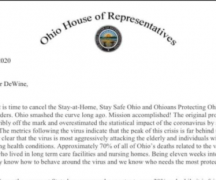Ohio teachers have made themselves clear: They worry greatly about the spread of COVID-19 in their schools.
They acknowledge the challenges of remote learning are plentiful. They understand the potential social and emotional impact to young students being stuck at home rather than at school with their classmates.
However, their health fears of the virus remain even greater.
That is among the conclusions of a recent survey of educators conducted by the Ohio Federation of Teachers. The union sent out the survey on July 22 to nearly 12,000 members who work in K-12 education. Responses were returned between then and Aug. 9, a time period in which school districts around Ohio continued deliberating plans for the fall.
In lieu of a statewide plan, the Ohio Department of Education is allowing each school district to decide how best to navigate the coming semester amid the coronavirus pandemic. For those choosing in-person instruction, the state is requiring various mitigation efforts be taken. This includes mandatory masks for teachers and students, along with ample cleaning and access to hand sanitizer.

Some districts have opted to return with a fiveday, in-person school week. Others, particularly in the more populated areas, are choosing to keep students home and conduct the semester through remote/online methods.
Many others are going with a hybrid option, such as splitting the school body in half and alternating days of in-person instruction. This reduces the number of people in a building, allowing for safe social distancing.
In a select few districts, families have the choice of sending children back or enrolling in an online program instead.
For the districts allowing for at least some in-person instruction, though, teachers there are given little choice but to return.
That is against the wishes of around 1,700 OFT members who completed the recent survey.
Many of the survey results mirror the anxious comments heard by the Ohio Capital Journal last month from nearly 100 teachers and other school workers.
Asked to identify their “major concerns” about returning to an in-person environment, most respondents said they are anxious about the “unknown long-term effects of COVID-19” for themselves, their family members and students. The vast majority say they worry about the potential for community spread should their schools reopen.
Around 1 in 3 say they consider themselves to be in a “high risk population for COVID-19.” Nearly half say a family or household member is at high risk of the virus.
They were asked which method of learning they would be “most comfortable with” this fall.
Just 8% said the most comfortable option was returning to a five-day school week with the whole student body.
A whopping two-thirds of respondents said their preference was to stick with distance learning.
The remaining 25% said they would be most comfortable with a blended learning option (mixing online with in-person opportunities), either for the whole semester or at least until cases in their area “decline significantly.”
Those surveyed were also asked to detail their concerns with distance learning, despite it being their approved method.
A majority said they fear their students falling behind on academic progress if at home. They worry about the social and emotional impacts of them not being able to socialize with classmates at recess or in the lunchroom.
While schools try to provide an equal playing environment for students, the teachers are concerned that being at home they are exposed to the disparities in income and access to technology.
During the spring, when Ohio suddenly moved to online learning, students without adequate internet access at home had a difficult time making the transition. Some students resorted to using Wi-Fi connections in a school or business parking lot to complete their online assignments.
The state is now offering $50 million in BroadbandOhio Connectivity grant funding. Schools are encouraged to apply, with money going to paying for students’ home internet connections and installing public Wi-Fi infrastructure, among other related needs.
For some teachers, there is a concern about additional disparities due to race, ethnicity or language.
There is also the concern of not being able to provide students with access to meals and other wraparound services like counseling and healthcare.
The full survey results are available here.
***
Also from Ohio Capital Journal:
Commentary: Should anyone be surprised by Householder’s downfall?
Ohio House Speaker Larry Householder’s dramatic tumble from power last month shouldn’t have come as a surprise to anyone who has followed his career since 1996 when he was first elected to represent southeast Ohio’s 78th House District.
As editor of The Athens NEWS, an alternative/community newsweekly in Athens, Ohio, I was uniquely situated to not only observe Householder’s early legislative career but to cover it and occasionally editorialize about it. During his first three terms in the Ohio General Assembly, the 78th District included much of Athens County, including the city of Athens.
A conspicuous theme runs through that news coverage, especially in the 2000-2004 period examined in this column — Householder’s willingness to do almost anything to attain, maintain and expand his power. Some version of the term “sell-out” often would pop up in the words of critics (myself included), including in the context of the main statewide issue of that era, court-ordered school-funding reform.
Looking at those times, one shouldn’t be too surprised at Householder’s current predicament — facing a federal indictment for racketeering, for what investigators say was a $61 million bribery scheme. READ MORE
Ohio school asks state supreme court to speed up decision on armed teachers policy
An Ohio school district hoping to enact a policy to arm teachers is asking the Ohio Supreme Court to speed up their decision in light of an approaching school year.
Last week, the state’s highest court agreed to hear the appeal of the Madison Local School District, after an appeals court ruled they did not have the right to enact a “firearms authorization policy” that would allow armed teachers in schools.
When the court of appeals made that ruling in March 2020, it had “no practical effect” on the district, attorneys for the district said in court documents. The decision came after Ohio Gov. Mike DeWine closed schools throughout the state due to the COVID-19 pandemic.
“That changes (Aug. 13), when the 2020-21 school year begins for Madison with in-person classroom instruction,” attorneys for the district said in their motion. READ MORE
At least 26 trans people have been killed in the U.S. this year. This is who they are
As of July 31, at least 26 trans people have been killed in the U.S. this year, and a vast majority of them were people of color. The violence each of them endured is horrific and should not happen to anybody, especially those who are merely trying to be who they are. Those who perpetrate such violence should be brought to justice. Since we began publishing in 1976, we have reported on the discrimination that trans people face, and we will continue to do so as long as we exist.
But all too often the news media frames these human beings as statistics, leading with the details of their murder and adding them to the growing number of homicides in a given period of time.
Each trans person who was killed this year had a family, a personality, interests, dreams, fears and insecurities. Each left a unique and indelible footprint in their community. Each person was here, and each lived as their authentic selves.
Rather than portraying these trans people as mere statistics, we’ve decided to put together a feature on who they were as people. What they did for a living, what they loved to do, who they impacted, who they wanted to be. READ MORE





